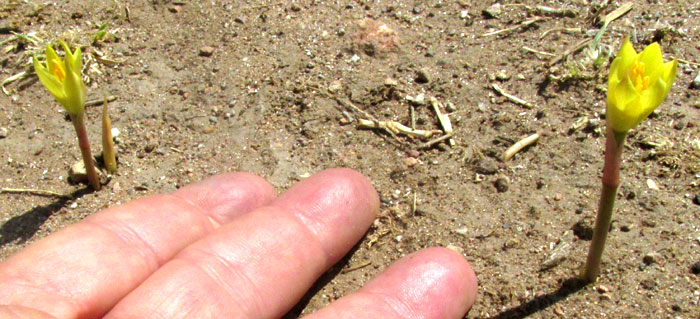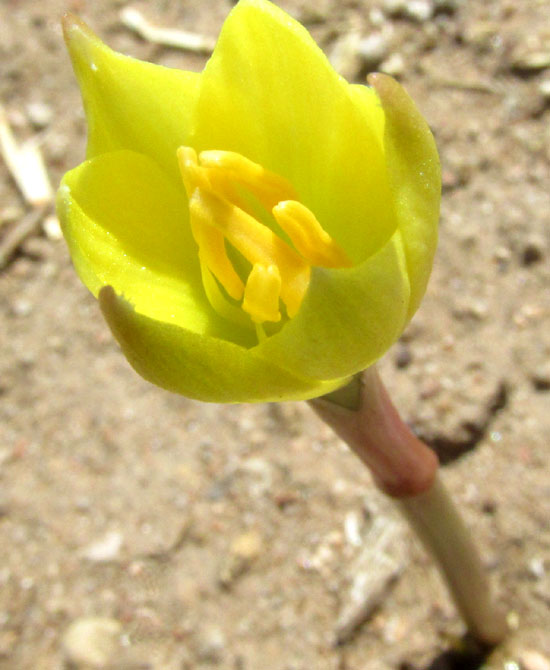Excerpts from Jim Conrad's
Naturalist Newsletter
entry dated June 11, 2022, issued from near Tequisquiapan, elevation about 1,900m (6200 ft), Querétaro state, MÉXICO
COPPER ZEPHYRLILY

After an exceptionally long dry season with no rain since last December, finally we received 22mm (7/8 inch), and three days later the above yellow flowers popped up in what seems an unlikely place: the grossly overgrazed, devegetated, very thin, sandy soil at the town's edge where each rain causes more erosion. Here's a peep into a still-unfolding blossom:

At first, I thought this was the Yellow Rain-lily we saw in the Yucatan. Those were tall, for they had plenty of rain, but also their tepals -- tepals being the term used when the calyx's sepals aren't clearly different from the corolla's lobes or petals -- seem a bit wider, and the anthers somewhat longer and more slender. More importantly, here in upland central Mexico we have a yellow rain-lily species of the same genus Zephyranthes, which looks just like our pictures, ZEPHYRANTHES LONGIFOLIA.
Zephyranthes longifolia is distributed in highland sandy, gravelly, calcareous or alkaline soils from southeastern Arizona to southwestern Texas, then south throughout Mexico's arid and semiarid highlands to about our location. In the US several publications refer to it as the Copper Zephyrlily, though it's still a rain-lily.
I find no literature reporting human uses for this plant. The Flora of North America reports its common name as cebollita, meaning "little onion," so possibly in the US deserts indigenous people have eaten the bulbs.